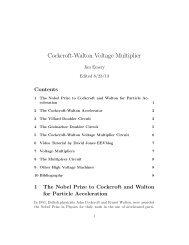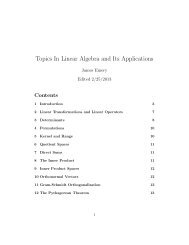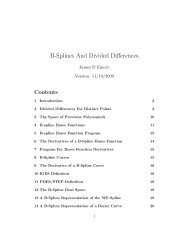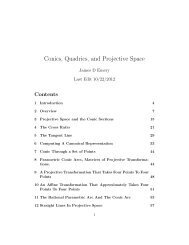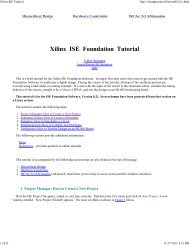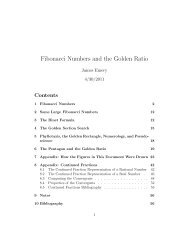Controlling a Rolling Ball On a Tilting Plane - STEM2
Controlling a Rolling Ball On a Tilting Plane - STEM2
Controlling a Rolling Ball On a Tilting Plane - STEM2
Create successful ePaper yourself
Turn your PDF publications into a flip-book with our unique Google optimized e-Paper software.
6 The Mapping of Camera Coordinates to<br />
HorizontalxandyCoordinates<br />
This is the problem of aerial photography in miniature. But let us assume<br />
that there are two functions f x and f y that map the video pixel coordinates<br />
(i, j) tox and y coordinates. That is<br />
x = f x (i, j),<br />
and<br />
y = f y (i, j).<br />
Perhaps these are given by OpenCV functions. For more precision we<br />
might have to consider the optics and focal properties of the camera lenses.<br />
Now to compute the z coordinate we need the equation of the table plane<br />
for a given tilt.<br />
7 Projecting to the Tilted <strong>Plane</strong><br />
So in the previous section we assume we have the x and y coordinates computed<br />
from the camera image as<br />
x = f x (i, j),<br />
and<br />
y = f y (i, j).<br />
Now we need the z coordinate of the point on the plane. We find z using the<br />
equation of the plane found from the actuator lengths which define the plane<br />
normal n. The equation of the plane is<br />
xn x + yn y + zn z = h,<br />
from which we have<br />
z = h − (xn x + yn y )<br />
n z<br />
.<br />
8 Sampling the <strong>Ball</strong> Velocity<br />
We compute the ball velocity by getting two ball positions in a small time<br />
interval ∆t.<br />
v = p 2 − p 1<br />
∆t<br />
7



